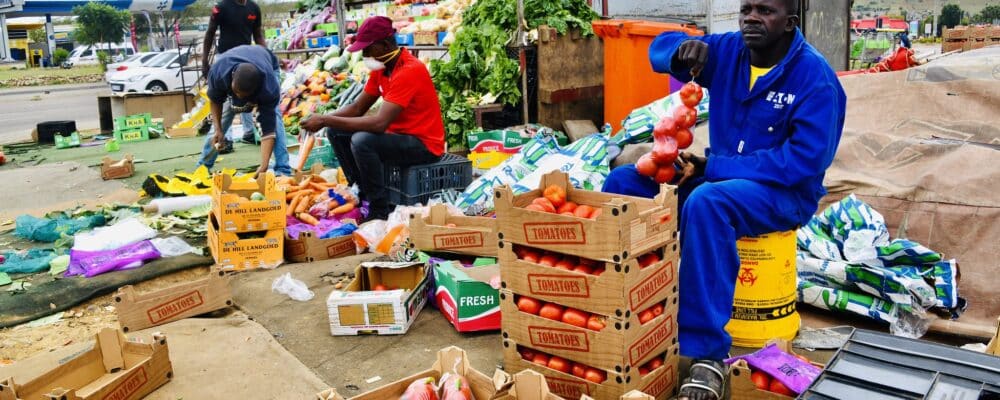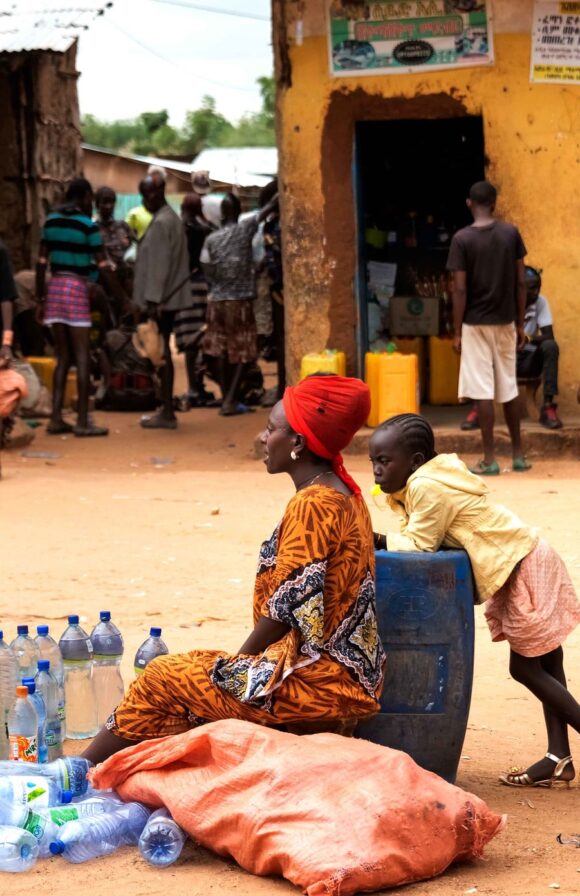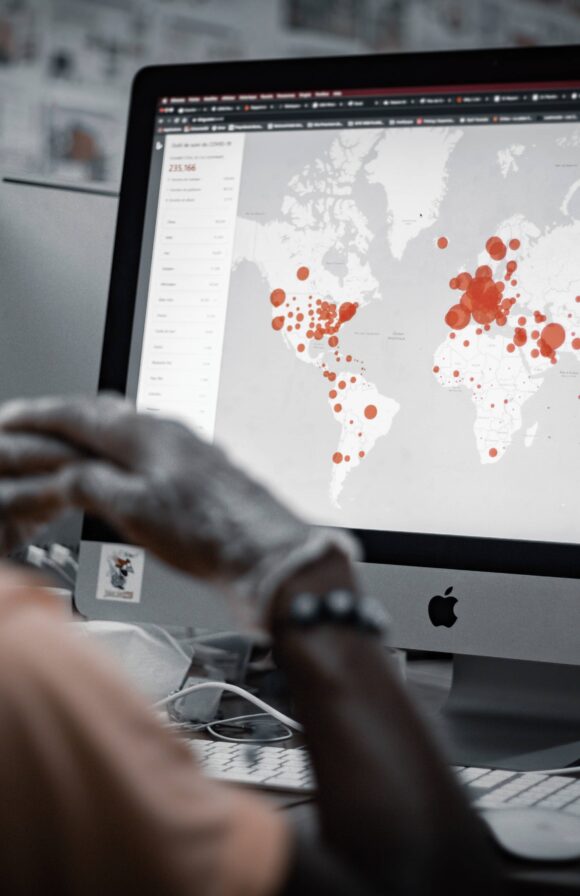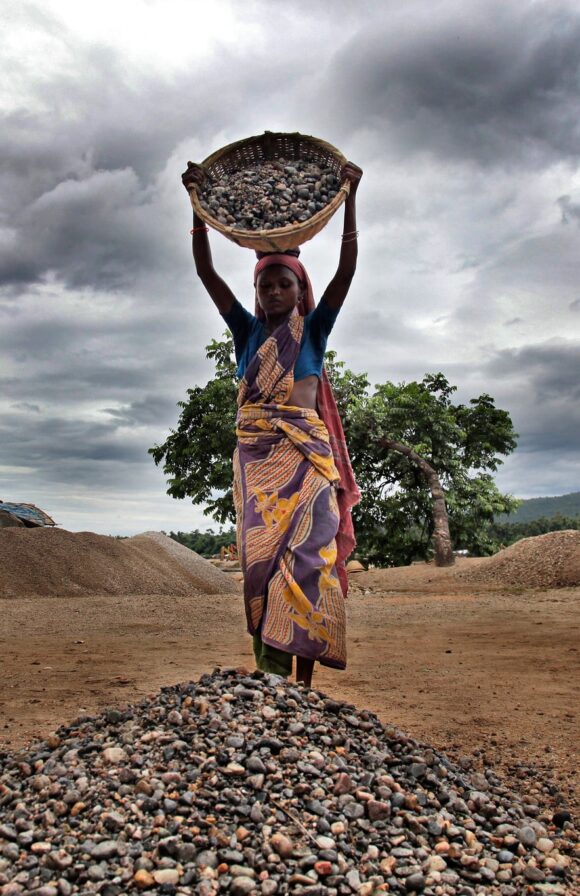
Given the volume of information online, the growing body of experience to learn from and the honing of debates, we have chosen to shift from general updates to focus each news item around a particular key issue. The first special edition below focuses on the topic of food security and nutrition, with a short initial update on the general situation in Africa, including some topics raised briefly last week.
Update on COVID-19 trends and measurements in Africa
Many African countries are now grappling with how to restart their economies and avoid large increases in poverty without placing their populations under severe health risk. While some countries such as Nigeria and South Africa continue to see an exponential increase in the number of reported coronavirus cases, others such as Burkina Faso and Ethiopia have seemingly flattened the disease curve. Many of these trends, however, are being observed with skepticism, with the overall low incidence of new infections being considered an underestimate of reality.
Data accuracy and availability (particularly regarding testing) and social protection challenges present two of the greatest obstacles to reducing uncertainty and managing major trade-offs between starvation and disease, economy and wellbeing. Here, we share the latest knowledge on testing and social protection in Sub-Saharan Africa, followed by a more in-depth focus on COVID-19 and food security in the region, an issue which was initially overshadowed by pandemic and economic concerns has gained attention in the crisis impact and response debate.
Testing:
- There is an urgent need to expand testing capacity for COVID-19 across the continent. Accessible and affordable tests are the only hope of being treated and potentially survival for many vulnerable people. Screening also helps to increase citizen awareness and cooperation and to inform governments on decisions such as when to remove lockdown measures and how to allocate health spending.
- Testing has been scarce throughout the region. Ghana and South Africa have carried out the most tests (113,000 and 197,000 respectively), though this still amounts to less than 4000 per 1 million population, while Nigeria, the continent’s most populous country with over 200 million people, has tested just 13,000 individuals.
- The Africa Centres for Disease Control and Prevention (CDC) committed last week to distributing more than 1 million test kits to African countries in four weeks (rising to 10 million tests in 24 weeks) through the Partnership to Accelerate COVID-19 Testing (PACT). However, with over 15 million tests needed, there is still a major gap to be filled.
- Notable assistance has been given from the private sector and foreign donors in this effort. In Nigerian, medical delivery company Lifebank has launched two drive-through mobile testing centers to boost coronavirus testing numbers in the country, and the private-sector led Coalition Against COVID-19 (CACOVID) has ordered 250,000 testing kits. German cooperation has contributed to expanding testing capacity in Ghana and the Sahel.
- The US think tank Atlantic Council published a paper identifying that beyond the undersupply of tests, efforts to push for mass testing were compromised by logistical constraints in accessing rural and densely populated urban areas, shortages of healthcare staff and facilities, distrust of health workers, and a stigma associated with the virus itself.
Social protection:
- In the past week, five more African countries have introduced or adapted social protection programs specifically to deal with the COVID-19 crisis (Congo, Gambia, Somalia, South Sudan, and Sudan), bringing the regional total to 35 countries.
- Currently, there are 81 social assistance programs in place, and just 8 social insurance and 4 labour market programs. There is a need to explore what other regions are doing in terms of labour market and social insurance programs, to see what can feasibly be applied in different African countries. For example, Indonesia has doubled spending on the program ‘Kartu Pra-Kerja’ that gives subsidized vouchers to unemployed workers for skilling and reskilling, making it accessible to approximately 5.6 million informal workers and SMEs who have been impacted economically by COVID-19.
- Regarding wage subsidies, there is an important trade-off to be considered between supporting SMEs and self-employed workers who are more vulnerable, and supporting larger firms who provide a lot of local employment and uphold key economic structures.
- In general, social protection responses have lagged behind measures to contain the spread of coronavirus, due in many instances to fiscal and liquidity constraints. Moreover, with the average duration of these programs being 2.9 months, there are question marks around the longer-term sustainability of social protection.
Food security
Global restrictions in production, trade and transportation are threatening the functioning of Africa’s food systems. Lockdowns, border closures and halted production have compounded food shortages and led to dramatic changes in food prices. Simultaneously, work and income losses have led to an expected increase in the rate of relative poverty by 56 per cent in low-income countries aroun the world, or up to half a billion in the worst-case scenario. With an increasing share of the world’s poor and food insecure living in Africa, these trends create an imminent threat of a continent-wide food crisis.
Even before the crisis, Africa was facing a series of disruptions to its food system, including locust plague, droughts, floods, and foreign exchange losses. Malnutrition and hunger were already leading causes of death and disease in the region, making it highly vulnerable to health and food crises. The 2020 Global Report on Food Crises showed that, at the start of this year, more than half of the global population who were acutely food insecure (or over 73 million people) lived in Africa. The current situation has exposed major cracks in the food system in terms of how production is organised and how people source food, and will most likely exaggerate this figure unless urgent action is taken.
Here, we identify some of the interventions to ensure short-term food security and nutrition in the SSA region, and the impacts they are having on different vulnerable groups. We also present some of the recommendations for preventing an ongoing food crisis and helping businesses to stay in operation. The Dutch Food and Business Knowledge Platform also offers key resources on COVID-19 impacts on food and nutrition security, including a hunger map by the World Food Program to monitor the ongoing situation.
1. Responses around food security and nutrition
- Emergency food distribution programs by multiple actors, including CSOs, charities and communities themselves, are doing their best to satisfy household food needs. With foreign aid squeezed and transportation highly restricted, however, they have been unable to reach all the hungry, who are no longer just the poorest of the poor. In addition, food programs have caused unintended consequences such as stampedes, violence and the breaching of social distancing protocols, showing a need for better planning and organisation of initiatives. Lessons could be learned from municipalities where public administrations are collaborating with community/non-governmental actors to map vulnerable people and scale up food distribution to reach all of those in need.
- A new IFAD fund of US $40 million has been launched to help prevent a rural food crisis in the wake of COVID-19. The fund is intended to support farmers and rural communities to continue growing and selling food by accessing markets, inputs, information and financial services, with the broader goal of maintaining the progress made so far towards SDG1 and SDG2. The foundation also seeks to gain further endorsements from member states and the private sector to help in its efforts.
- The Policy Support and Governance page by the FAO houses an extensive list of publications on expanding and improving emergency food assistane and social protection programmes to meet the needs of the most vulnerable, providing immediate assistance to protect smallholder farmers’ food production and boost e-commerce of food businesses, and addressing trade and tax policies to keep global trade open.
- The FAO has taken on the enormous challenge of distributing 10,000 metric tons of maize and vegetable seeds to vulnerable farmers in South Sudan in advance off planting season to ensure they have food to grow, eat and sell. The initiative is attempting to shorten supply chains and overcome current logistical constraints by encouraging farmers to buy seeds from local vendors using cash rather than attending crowded seed fairs in trading centres, many of which are inaccessible due to restricted movement.
2. Impacts on vulnerable groups
- Small-scale rural farmers, who are already vulnerable due to low average incomes, a lack of protection, and seasonal or climate-related disturbances, are particularly at risk of losing their livelihoods due to falling consumption and constricted access to markets and inputs. Farmers and traders are also exposed to significant health risks if lockdowns are lifted, given the scarcity and poor quality of sanitation and healthcare infrastructure. This creates a policy conundrum by potentially forming a trade-off between disease and starvation, which supports the need for greater testing and information around risk.
- Supply chains are affected differently depending on the nature of goods, trade patterns and commodity price fluctuations. In Ethiopia, dairy farmers are being hit particularly badly, as demand for perishable goods has decreased and the price of remaining goods plummeted due to oversupply. Sectors with a high share of agricultural inputs sourced from China, such as seeds or fertilizers, are also struggling to maintain operations.
- The COVID-19 nutrition crisis: what to expect and how to protect shows the reductions in dietary quality due to heightened unemployment. The demand for nutritious food has declined due to its relative cost and difficulty with storage, with the poorest being affected the most by price hikes, panic buying and food shortages. The article provides recommendations for keeping agricultural systems running, increasing access to nutrient-rich food, and maintaining public health.
- Maternal and child health can suffer particularly during food crises. Increasing the rate of hunger and malnutrition, even for a short period, can contribute to child stunting and nutrient deficiencies which can cause long-term damage. Poor nutrition also lowers individual immunity, leading to increased risk of infection and disease which is especially concering during outbreaks. This nexus between food and health, if it persists, can interact with other aspects of poverty and wellbeing by decreasing rates of return to work and education.
- Africa’s food crisis also has a strong link with informality, since a high portion of its population sources both food and employment informally, and informal workers are often not eligible for cash and in-kind transfers to mitigate the effect of job losses on consumption (though some social protection programs are beginning to incorporate informal workers). ILO’s 3rd edition of ‘COVID-19 and the world of work’, published last week, estimated a decline in informal sector earnings by 81 per cent in Africa during the first month of the regional outbreak, which is extremely concerning for meeting their basic needs.
3. Impacts on inclusive development
- ‘As global food crisis looms, local leaders offer solutions’ discusses the underlying fragility of global food systems (related to exploitative corporate agriculture and undiversified farming) which has left them vulnerable to collapse. The article paves the way for more local, sustainable models of food production which allow communities to withstand crises by having greater food sovereignty. It promotes a major role for local organisations to support, for instance, farming cooperatives or communal land management practices. African indigenous foods: Opportunities for improved food and nutrition security similarly discusses the potential for traditional food to improve the health and nutrition of the poor, empower local producers and processors, many of whom are women, and protect the cultural identity of marginalised groups.
- The FAO Urban Food Actions Platform documents a range of initiatives, good practices, innovations and regulations by national and local governments around the world, in collaboration with civil society at different levels. For example, ‘The role of cities and local governments in responding to the emergency’ cites a list of short- and long-term actions to minimise the social costs of disease, particularly in densely-populated, informal urban areas, and to strengthen the resilience of urban food systems.



